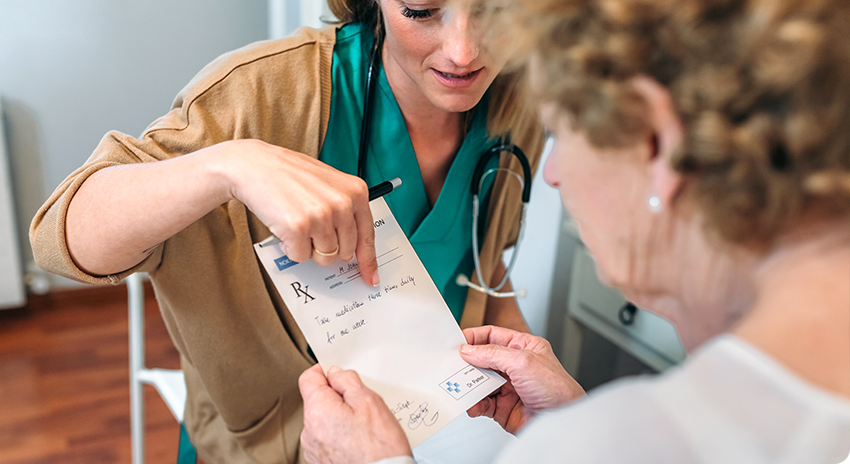This website uses cookies so that we can provide you with the best user experience possible. Cookie information is stored in your browser and performs functions such as recognising you when you return to our website and helping our team to understand which sections of the website you find most interesting and useful.
Home Care In Bloomington, MN

They say that your golden years are the best years of your life. For most older Americans, that's how it should be - a time to relax, reflect, and live life in a familiar place. After all, senior citizens in the U.S. have worked tirelessly to build a better economy, serve their communities, and raise families.
However, as seniors grow older, completing daily tasks like showering and enjoying activities such as visiting the historic Historic 1880 Jabs Farmstead gets harder without someone by their side. Unfortunately, many older Americans aren't able to rely on their adult children for help. The reality in today's world is that family members do not have the skills or time to dedicate to caring for their parents. That's where Always Best Care Senior Services comes in.
Our in-home care services are for people who prefer to stay at home as they grow older but need ongoing care that family or friends cannot provide. More and more older adults prefer to live far away from long-term, institutionalized facilities and closer to the place where they feel most comfortable - their home. Home care in Bloomington, MN is a safe, effective way to give your loved ones the care they need when they need it the most.

 Home Care Services
Home Care Services
- Home Care in Bloomington, MN
- The Always Best Care Difference
- Types of In-home Care in Bloomington, MN
- Benefits of Home Care in Bloomington, MN
- Aging in Place: The Preferred Choice for Most Seniors
- Affordable Care Plans
- Compassionate Care. Trusted Caregivers
- Assisted Living Referral Services
- Taking the First Step with Always Best Care
 Service Areas
Service Areas
The Always Best Care Difference
Since 1996, Always Best Care has provided non-medical in-home care for seniors to help them maintain a healthy lifestyle as they get older. We are proud to have helped more than 25,000 seniors maintain higher levels of dignity and respect. We focus on providing seniors with the highest level of in-home care available so that they may live happily and independently.
Unlike some senior care companies, we genuinely want to be included in our clients' lives. We believe that personalized care is always the better option over a "one size fits all" approach. To make sure our senior clients receive the best care possible, we pair them with compassionate caregivers who understand their unique needs. That way, they may provide care accordingly without compromising their wellbeing.
The Always Best Care difference lies in life's little moments - where compassionate care and trustworthy experience come together to help seniors live a fruitful, healthy life. Whether you are an aging adult that can't quite keep up with life's daily tasks or the child of a senior who needs regular in-home services, Always Best Care is here to help.
“I am a current client of this provider Always Best Care comes in to help my”
“I am a current client of this provider Always Best Care comes in to help my dad a shower at night. When the guy came out to interview, he was really good and helpful, but it was just hard to find someone to help with dad been a little bit bigger and heavier. They like the person that they had come out a couple of times. The caregiver is good.”
What is Non-Medical Senior Care in Bloomington, MN?

Home is where the heart is. While that saying can sound a tad cliche, it is especially true for many seniors living in America. When given a choice, older adults most often prefer to grow older at home. An AARP study found that three out of four adults over the age of 50 want to stay in their homes and communities as they age.

When you begin to think about why, it makes sense. Home offers a sense of security, comfort, and familiarity.

The truth is, as we age, we begin to rely on others for help. When a family is too busy or lives too far away to fulfill this role, in-home senior care is often the best solution. Home care services allow seniors to enjoy personal independence while also receiving trustworthy assistance from a trained caregiver.

At Always Best Care, we offer a comprehensive range of home care services to help seniors stay healthy while they get the help they need to remain independent. As your senior loved one gets older, giving them the gift of senior care is one of the best ways to show your love, even if you live far away.

Types of Elderly Care in Bloomington, MN
To give our senior clients the best care possible, we offer a full spectrum of in-home care services:

Personal Care Services
If your senior loved one has specific care needs, our personal care services are a great choice to consider. Personal care includes the standard caregiving duties associated with companion care and includes help with tasks such as dressing and grooming. Personal care can also help individuals with chronic conditions like diabetes.
Common personal care services include assistance with:
- Eating
- Mobility Issues
- Incontinence
- Bathing
- Dressing
- Grooming


Home Helper Services
Sometimes, seniors need helpful reminders to maintain a high quality of life at home. If you or your senior has trouble with everyday tasks like cooking, our home helper services will be very beneficial.
Common home helper care services include assistance with:
- Medication Reminders
- Meal Preparation
- Pet Care
- Prescription Refills
- Morning Wake-Up
- Walking
- Reading


Companionship Services
Using this kind of care is a fantastic way to make life easier for you or your senior loved one. At Always Best Care, our talented caregivers often fill the role of a companion for seniors. That way, older adults can enjoy their favorite local activities, such as visiting West Bush Lake Park with friends while also receiving the care they need daily or weekly.
Common companionship services include:
- Grocery Shopping
- Transportation to Appointments
- Nutritional Assistance
- Conversation
- Planning Outings
- Completing Errands
- Transportation to Community
- Events and Social Outings


Respite Care Services
According to AARP, more than 53 million adults living in the U.S. provide care to someone over 50 years old. Unfortunately, these caregivers experience stress, exhaustion, and even depression. Our respite care services help family caregivers address urgent obligations, spend time with their children, and enjoy nearby activities. Perhaps more importantly, respite care gives family members time to recharge and regroup. Taking personal time to de-stress reduces the risk of caregiver burnout. So, if you've always wanted to eat at the local Ciao Bella or visit Bloomington Historical Society, don't feel bad. Doing so is great for both you and your loved one.
At the end of the day, our goal is to become a valuable part of your senior's daily routine. That way, we may help give them the highest quality of life possible. We know that staying at home is important for your loved one, and we are here to help make sure that is possible.
If you have been on the fence about non-medical home care, there has never been a better time than now to give your senior the care, assistance, and companionship they deserve.

Benefits of Home Care in Bloomington, MN
Always Best Care in-home services are for older adults who prefer to stay at home but need ongoing care that friends and family cannot provide. In-home care is a safe, effective way for seniors to age gracefully in a familiar place and live independent, non-institutionalized lives. The benefits of non-medical home care are numerous. Here are just a few reasons to consider senior care services from Always Best Care:
Always Best Care offers a full array of care options for patients at all levels of health. With our trusted elderly care services, your loved one will receive the level of care necessary for them to enjoy the highest possible quality of life.
Request More Information
Aging in Place: The Preferred Choice for Most Seniors
While it's true that some seniors have complicated medical needs that prevent them from staying at home, aging in place is often the best arrangement for seniors and their families. With a trusted caregiver, seniors have the opportunity to live with a sense of dignity and do so as they see fit - something that is unavailable to many older people today.
In-home care makes it possible for millions of seniors to age in place every year. Rather than moving to a strange nursing home, seniors have the chance to stay at home where they feel the happiest and most comfortable.
Here are just a few of the reasons why older men and women prefer to age at home:
How much does a senior's home truly mean to them?
A study published by the American Society on Aging found that more than half of seniors say their home's emotional value means more than how much their home is worth in monetary value. It stands to reason, then, that a senior's home is where they want to grow old.
With the help of elderly care in Bloomington, MN, seniors don't have to age in a sterilized care facility. Instead, they can age gracefully in the place they want to be most: their home. In contrast, seniors who move to a long-term care facility must adapt to new environments, new people, and new systems that the facility implements. At this stage in life, this kind of drastic change can be more harmful than helpful.
Institutional care facilities like nursing homes often put large groups of people together to live in one location. On any given day, dozens of staff members and caregivers run in and out of these facilities. Being around so many new people in a relatively small living environment can be dangerous for a seniors' health and wellbeing. When you consider that thousands of seniors passed away in nursing homes during the COVID-19 pandemic, opting for in-home care is often a safer, healthier choice for seniors.
Aging in place has been shown to improve seniors' quality of life, which helps boost physical health and also helps insulate them from viral and bacterial risks found in elderly living facilities.
For many seniors, the ability to live independently with assistance from a caregiver is a priceless option. With in-home care, seniors experience a higher level of independence and freedom - much more so than in other settings like a nursing home. When a senior has the chance to age in place, they get to live life on their own terms, inside the house that they helped make into a home. More independence means more control over their personal lives, too, which leads to increased levels of fulfillment, happiness, and personal gratification. Over time, these positive feelings can manifest into a healthier, longer life.
More independence, a healthier life, and increased comfort are only a few benefits of aging in place. You have to take into consideration the role of cost and convenience. Simply put, it's usually easier and more affordable to help seniors age in place than it is to move them into an institutional care facility. According to the US Department of Housing and Urban Development, seniors who age in the comfort of their homes can save thousands of dollars per month.
In-home care services from Always Best Care, for instance, are often less expensive than long-term solutions, which can cost upwards of six figures per year. To make matters worse, many residential care facilities are reluctant to accept long-term care insurance and other types of payment assistance.
With Always Best Care's home care services, seniors and their families have a greater level of control over their care plans. In-home care gives seniors the chance to form a bond with a trusted caregiver and also receive unmatched care that is catered to their needs. In long-term care facilities, seniors and their loved ones have much less control over their care plan and have less of a say in who provides their care.

Affordable Care
In-home care is a valuable resource that empowers seniors to age in place on their own terms. However, a big concern for many families and their loved ones is how much in-home care costs. If you're worried that in-home care is too expensive, you may be pleasantly surprised to learn that it is one of the most affordable senior care arrangements available.
Typically, hiring an Always Best Care in-home caregiver for a few hours a week is more affordable than sending your loved one to a long-term care facility. This is true even for seniors with more complex care needs.
At Always Best Care, we will work closely with you and your family to develop a Care Plan that not only meets your care needs, but your budget requirements, too. Once we discover the level of care that you or your senior need, we develop an in-home care plan that you can afford.
In addition to our flexible care options, families should also consider the following resources to help offset potential home care costs:

Compassionate Care. Trusted Caregivers.
When you or your senior loved one needs assistance managing daily tasks at home, finding a qualified caregiver can be challenging. It takes a special kind of person to provide reliable care for your senior loved one. However, a caregiver's role involves more than meal preparation and medication reminders. Many seniors rely on their caregivers for companionship, too.
Our companion care services give seniors the chance to socialize in a safe environment and engage in activities at home. These important efforts boost morale and provide much-needed relief from repetitive daily routines. A one-on-one, engaging conversation can sharpen seniors' minds and give them something in which to be excited.
At Always Best Care, we only hire care providers that we would trust to care for our own loved ones. Our senior caregivers in Bloomington, MN understand how important it is to listen and communicate with their seniors. A seemingly small interaction, like a short hug goodbye, can make a major difference in a senior's day. Instead of battling against feelings of isolation, seniors begin to look forward to seeing their caregiver each week.
Understanding the nuances of senior care is just one of the reasons why our care providers are so great at their job.
Unlike some senior care companies, our caregivers must undergo extensive training before they work for Always Best Care. In addition, our caregivers receive ongoing training throughout the year. This training ensures that their standard of care matches up to the high standards we've come to expect. During this training, they will brush up on their communication skills, safety awareness, and symptom spotting. That way, your loved one receives the highest level of non-medical home care from day one.
Assisted Living Referral Services
While it's true that many seniors prefer to age at home, sometimes in-home care isn't the best fit. For those seniors and their families, choosing an assisted living facility makes more sense. Unfortunately, finding the optimal care facility is easier said than done in today's day and age. That's when Always Best Care's assisted living referral services begin to make a lot of sense.
Assisted living is a form of housing intended for seniors who require varying degrees of medical and personal attention. Accommodations may include single rooms, apartments, or shared living arrangements. Assisted living communities are typically designed to resemble a home-like environment and are physically constructed to encourage the independence of residents.

At assisted living communities, seniors receive help with daily activities such as bathing, dressing, and eating. They may also benefit from coordination of services with outside healthcare providers, and monitoring of resident activities to ensure their health, safety, and well-being. Caregivers who work at assisted living communities can also provide medication administration and personal care services for older adults.
Other services offered within assisted living communities can include some or all of the following:
- Housekeeping
- Laundry
- Recreational Activities
- Social Outings
- Emergency Medical Response
- Medication Monitoring
- Family Visitation
- Personal Care

At Always Best Care, our representatives can match your senior's emotional, physical, and financial needs with viable assisted living communities nearby. Results are based on comparative data, so you can select the best choice for you or your loved one.
Always Best Care works closely with local senior living communities to gain valuable knowledge that we then use to help seniors and their loved ones make informed decisions. This information can include basic care and rent, resident availability, and services provided. Because Always Best Care is compensated by these communities, we provide senior living referral services at no extra cost to you.
Some of the most popular assisted living communities to consider in our area include the following:
- Hayden Grove Senior Living - Bloomington
- Presbyterian Homes of Bloomington
- Meadow Woods Assisted Living
- Amira Choice Bloomington
- The Geneva Suites
- Wealshire of Bloomington

For many seniors, moving into a senior living community revolves around how and when they want to make a transition to more involved care. Some seniors are more proactive about transitioning to independent living. Others choose to remain home until their care needs or other requirements are satisfied. Remember - our staff is here to help. Contact our office today to learn more about assisted living communities and how we can find a facility that exceeds your expectations.

Taking the First Step with Always Best Care
The first step in getting quality in-home care starts with a personal consultation with an experienced Always Best Care Care Coordinator. This initial consultation is crucial for our team to learn more about you or your elderly loved one to discover the level of care required. Topics of this consultation typically include:
A discussion of your needs and how our trained caregivers can offer assistance in the most effective way

A draft of your care plan, which includes highly detailed notes and a framework for the care that you or your senior will receive

Discuss payment options and help coordinate billing with your insurance provider

Our caregivers are trained to spot changes that clients exhibit, like mental and physical decline. As your trusted senior care company, we will constantly assess and update your Care Plan to meet any new emotional, intellectual, physical, and emotional needs.
If you have never considered in-home care before, we understand that you and your family may have concerns about your Care Plan and its Care Coordinator. To help give you peace of mind, know that every team member and caregiver must undergo comprehensive training before being assigned to a Care Plan.
At the end of the day, we only hire the best of the best at Always Best Care. Whether you need home care in Bloomington, MN 24-hours a day or only need a respite for a couple of hours, we are here to serve you.
When you're ready, we encourage you to contact your local Always Best Care representative to set up a Care Consultation. Our Care Coordinators would be happy to meet with you in person to get to know you better, discuss your needs, and help put together a personalized Care Plan specific to your needs.

Latest News in Bloomington, MN
This Bloomington landmark will become a bicycle park — for now
Greta Kaulhttps://www.startribune.com/thunderbird-ramada-becoming-bike-park-bloomington/601365931
As Bloomington grew up, the Thunderbird Motel, with its kitschy midcentury signage, was a local landmark.Soon, the city plans to turn the site where it once stood near Interstate 494 and Hwy. 77 into a bicycle park — at least until they can find a better use.This week, the Bloomington City Council voted to buy the nearly 12-acre property from the city’s Port Authority, which bought i...
As Bloomington grew up, the Thunderbird Motel, with its kitschy midcentury signage, was a local landmark.
Soon, the city plans to turn the site where it once stood near Interstate 494 and Hwy. 77 into a bicycle park — at least until they can find a better use.
This week, the Bloomington City Council voted to buy the nearly 12-acre property from the city’s Port Authority, which bought it for $18.5 million a decade ago and demolished the Thunderbird-turned-Ramada Inn. Since then, the Port Authority has struggled to find a suitable developer.
“We do get inquiries for this site, but the development landscape has been very challenging,” said Holly Masek, Bloomington’s Port Authority administrator.
City officials say they aren’t giving up, but the site is facing the end of a tax exemption deal this year, prompting Bloomington authorities to look for ways to keep that status until it can find a suitable development plan for the high-profile site that was once home to a local landmark.
When it was built in 1962, the Thunderbird was near the then-Metropolitan Stadium, where the Twins and Vikings played, and was the first Bloomington establishment to have a liquor license, according to the Bloomington Historical Society.
Despite criticism for its lack of cultural sensitivity toward Native Americans, the Thunderbird remained a time capsule of birchbark canoes, taxidermy, and conference rooms named after tribes into the 2000s. It became a themeless Ramada, before the Port Authority bought the land to save it from low-density development and demolished it in 2016.
The parcel was pitched for use in Bloomington’s failed World Expo bid to Belgrade, Serbia. With higher interest rates and construction costs, Bloomington hasn’t found the kind of “high-intensity” development pitch it’s looking for at the high-profile spot, Masek said.
Enter the bike skills park plan, which would keep the parcel tax-exempt as a public use, bringing in temporary ramps, jumps and paths for cyclists later this year.
“We all still think the site is very important, but the development environment is very challenging right now, so our goal at this point in putting it into public use is to give it another life,” she said.
A company associated with the Mall of America has a right of first refusal to purchase the property but has agreed not to exercise it. The city bought the land from the Port Authority for $1.
As the South Loop area has added housing, residents have asked for amenities.
A bike park is a relatively easy install, and a way to provide accessible recreation that complements mountain bike trails along the Minnesota River and paved bike paths, said Renae Clark, Bloomington’s assistant director of parks and recreation.
“It’s something that’s accessible to a lot of ages,” she said. “Different abilities, new riders, teens — which is a hard demographic to serve. And it promotes teen-family gathering.”
The bike park’s temporary fixtures will cost the city about $6,000, and the park will also require portable toilets, trash, signage and other maintenance.
The plan is for the bike park to be in place until development of the site, Clark said. The city would discuss the potential incorporation of public space in any development.
Minnesota Legislature clears the way for Mall of America water park subsidy
Eva Herscowitzhttps://www.startribune.com/mall-of-america-water-park-bloomington/601365938
A tax bill lawmakers approved Monday night gives Bloomington more time to put public dollars toward the Mystery Cove water park.Mystery Cove, an elaborate indoor water park, is coming to the Mall of America, and mall owners can thank the Minnesota Legislature for helping with financing for the long-awaited project.Lawmakers on Monday passed an omnibus tax bill that lets Bloomington pump public dollars to...
A tax bill lawmakers approved Monday night gives Bloomington more time to put public dollars toward the Mystery Cove water park.
Mystery Cove, an elaborate indoor water park, is coming to the Mall of America, and mall owners can thank the Minnesota Legislature for helping with financing for the long-awaited project.
Lawmakers on Monday passed an omnibus tax bill that lets Bloomington pump public dollars toward a $160 million subsidy for the project.
That key provision, tucked into a 123-page document, gives the city more time to pay for the water park through tax increment financing (TIF), a method that will use property taxes the Mall of America generates to subsidize Mystery Cove. It also affords cities across Minnesota additional time to fund various projects through TIF.
A Mall of America spokeswoman thanked Legislators in a statement shared with the Minnesota Star Tribune.
“We are incredibly excited about this project and the lasting economic benefits it will bring to the entire region — by boosting tourism, generating tax revenue, and creating jobs,“ the statement reads. ”This new concept will add a fresh and innovative experience to our offerings, further enhancing our appeal for both tourists and our local community."
Bloomington Mayor Tim Busse said in a statement that the city supports the TIF extension.
“We welcome the additional time due to the complexity of the project and challenging development environment,” Busse said.
The bill extends pandemic-era rules that loosened restrictions on the types of projects that cities can fund with TIF. Bloomington can now funnel property taxes that the Mall of America generates directly into the water park, so long as construction on the amenity begins before December 2027.
The development marks a significant victory for the sprawling mall, which has sought to open a water park inside the 5.6 million-square-foot establishment for decades.
It’s also an economic win for Bloomington, with the water park likely to draw more tourism to the city.
“A successful waterpark will build on Mall of America’s history of positive economic impact on Bloomington and the region,” said Bloomington Port Authority Administrator Holly Masek in a statement.
Kurt Hagen, the senior vice president of development for mall owner Triple Five Group, previously said Mystery Cove is expected to attract 750,000 annual guests, plus generate $9 million in yearly state and regional taxes and $3 million in annual city taxes.
The subsidy for the water park, with renderings showing a lazy river snaking through palm trees, has nearly tripled since 2019 while the square footage of the project has shrunk.
The bill has implications for communities beyond Bloomington, giving all Minnesota cities until December 2026 to fund projects with TIF pursuant to the relaxed pandemic-era rules.
St. Louis Park and Marshall, two cities that previously lobbied the legislature to extend the tax increment financing window, now have more time to finance planned affordable housing projects.
But it’s the Mall of America’s strident push for the TIF extension that’s attracted the most attention — and not all of it positive.
The mall and the legislature
Rep. Nathan Coulter, DFL-Bloomington, previously told the Star Tribune that excitement for using public money to finance a costly indoor water park has waned over the years.
“We’re getting to the point where the potential public support for this is not really, I think, the best direction and the best use of these public dollars,” Coulter previously said.
This isn’t the first time lawmakers have helped the country’s largest mall.
In 2013, the Legislature and then-Gov. Mark Dayton exempted the mall from the regional tax-sharing pool, allowing Bloomington to subsidize mall infrastructure with money that would have helped reduce property taxes elsewhere in the metro.
In 2008, the mall appealed to lawmakers for help subsidizing a proposed expansion — a situation reminiscent of the one that played out this session, though politicians ultimately opted to deny the mall state funding.
In the years since it opened, the mall has received $164 million in tax increment financing. It generated $150 million in taxes last year.
It’s unclear when construction on the water park will begin.
More from Twin Cities Suburbs
The school board agreed to update the district’s library materials review policy, which had been based on the now-defunct website BookLooks.org, in settling two lawsuits.
Minnesota Valley NWR - Confluence Gallery
FWS.govhttps://www.fws.gov/story/minnesota-valley-nwr-confluence-gallery
The refuge’s Confluence Gallery, located in the Bloomington Education and Visitor Center, is a venue for emerging and established Minnesota-based artists who excel at creating artwork with a focus on nature and natural elements, ecology, conservation, and/or the beauty of the Minnesota River Valley. The Confluence Gallery aims to serve as a conduit between the natural world and the local community; inspiring, educating, and connecting refuge visitors to the natural world.Artistry and the Minnesota Wildlife Refuge are proud to pr...
The refuge’s Confluence Gallery, located in the Bloomington Education and Visitor Center, is a venue for emerging and established Minnesota-based artists who excel at creating artwork with a focus on nature and natural elements, ecology, conservation, and/or the beauty of the Minnesota River Valley. The Confluence Gallery aims to serve as a conduit between the natural world and the local community; inspiring, educating, and connecting refuge visitors to the natural world.
Artistry and the Minnesota Wildlife Refuge are proud to present Badges by Cameron Zebrun. Our interpretation of the natural world can be seen through many different lenses: an emotional response to a sunset, a map bringing order to the random or giving direction to the lost. Nature can be seen as a symbol of spiritual power or a force that must be conquered. With the Badges series, Zebrun investigates landscapes through the shifting themes of history, science, romance and exploration, as well as the textures, patterns, and color of land, water and sky. Using the images of a camera shutter closing, the Badges Series tells many stories all informed by nature through multiple lenses of interpretation. For more information on the art pieces and artist visit the event page.
*Open extended hours for exhibition openings and artist talks. Check our events calendar for gallery events. Closed on federal holidays.
Minnesota Valley National Wildlife Refuge has partnered with Artistry and Minnesota Valley Refuge Friends to support the Confluence Gallery!
Stay up-to-date with gallery news by following Artistry and Minnesota Valley NWR at:
Artistry
Minnesota Valley National Wildlife Refuge
Disclaimer:


 952-283-1654
952-283-1654





